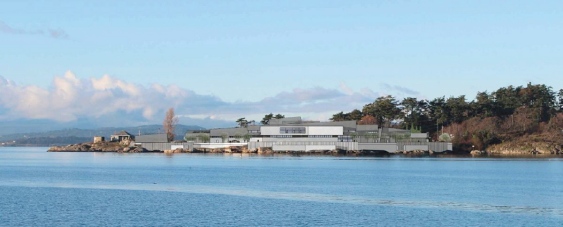CRD Sewage Treatment Plan: Facts and Comments
Facts and Comments
Fact 1: The CRD’s proposed $783 million secondary treatment system involves building a single facility at McLoughlin Point. The biosolids would be transported over 17km in a newly constructed pipeline to the Hartland dump where resource recovery (energy production) is expected to occur. A significant component of the overall cost is associated with the construction of this pipeline.
My Comment: The high costs associated with constructing the pipeline between McLoughlin Point and Hartland dump are unnecessary and could be significantly reduced. For instance, the Federal government could allow the biosolids to be processed at Macauley Point on the vacant Department of National Defense land, rendering the pipeline significantly shorter. Alternatively, several proponents have requested a more distributed model that would allow local municipalities to address sewage treatment as they see best fit for their jurisdictions. Such systems could incorporate tertiary sewage treatment and therefore also address the real problems of marine toxins. These are just two examples of other viable options to save taxpayers money and better address the real issues from sewage.
Fact 2: The CRD proposal includes a redesign of the system so that the Oak Bay storm water/ sewage common pipe usage would only lead to raw sewage overflows on local beaches during rain events that, on average, occur once every 5 years.
My Comment: We live in the context of a changing climate with projected increases in extreme rainfall. The events in Calgary and on the east coast of the United States are just two examples of this. It is well-known that the frequency of extreme precipitation events will go up as the world continues to warm from increasing greenhouse gases. As such, rain events that currently occur once in 5 years, will likely occur more frequently, thereby rendering the current plan possibly insufficient.
Fact 3: The sewage treatment plan is funded jointly by the CRD, the provincial government and the federal government, and therefore has to factor in deadlines from each level of government. The CRD was originally mandated by the Provincial Government to implement sewage treatment by 2016 and continues to operate under this deadline. The Federal Government has set its deadline at 2020. In answers to questions I posed during the July 2013 provincial budget estimates, Minister of the Environment Mary Polak opened the door to extending the current 2016 completion date with a formal request from the CRD. This would allow for plans and construction to formally be pushed to the federal deadline of 2020, or potentially even longer if both levels of government were convinced a new proposal offered greater benefits. In addition, Minister of Community, Sport and Cultural Development Coralee Oakes noted that the government is also open to a request from the CRD for extending funding. At present $248 million is not going to be realized until the 2017-18 and 2018-19 fiscal years.
My Comment: There seems to be an unwillingness to reconsider the current sewage treatment proposal because of a perceived need to meet arbitrary deadlines. I call these deadlines arbitrary because it is within each government’s power to change those deadlines should they see fit. For instance, delaying the sewage treatment deadline to the federal government’s 2020 deadline would allow sufficient time to reconsider the current proposal in light of its shortcomings in order to find a more cost-effective solution that also addresses the problem of marine toxins.CRD Sewage Treatment Plan: Facts and Comments
My Assessment
Victoria clearly needs to deal with its sewage. We are dumping raw screened sewage into the ocean and that is unsustainable. However, the proposed solution appears rushed and constrained to meet completely artificial timing deadlines put in place by politicians and government bureaucrats. The question is not if we need sewage treatment but rather if there is something that can be done better given a little more time.
I would like to see municipal, provincial and federal governments agree to a 2020 deadline for implementation of sewage treatment. It is important that we build a system for the future using the latest technology and not a system from yesteryear that doesn’t actually address many of the environmental and fiscal sustainability issues we face. I would want to see an integrated liquid and solid waste management strategy put in place that includes a thorough examination of distributed systems, exploration of public-private partnerships, and industry led solutions.
Comments are closed.




